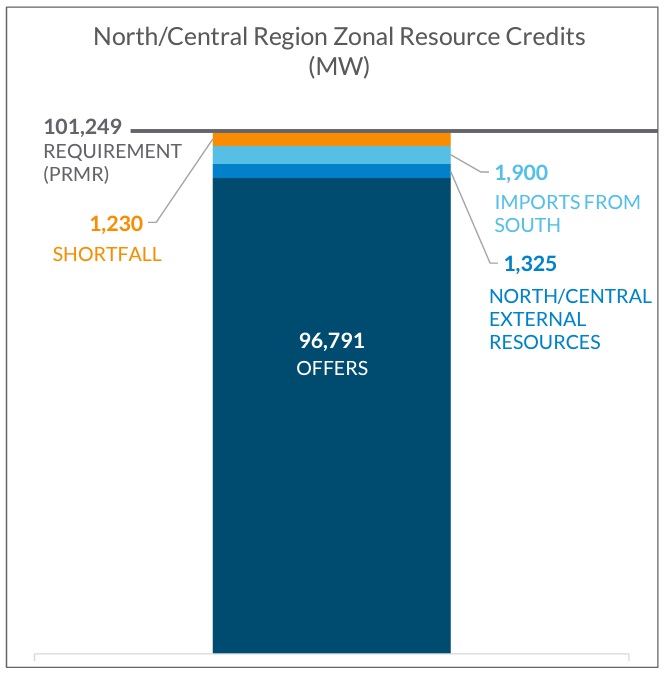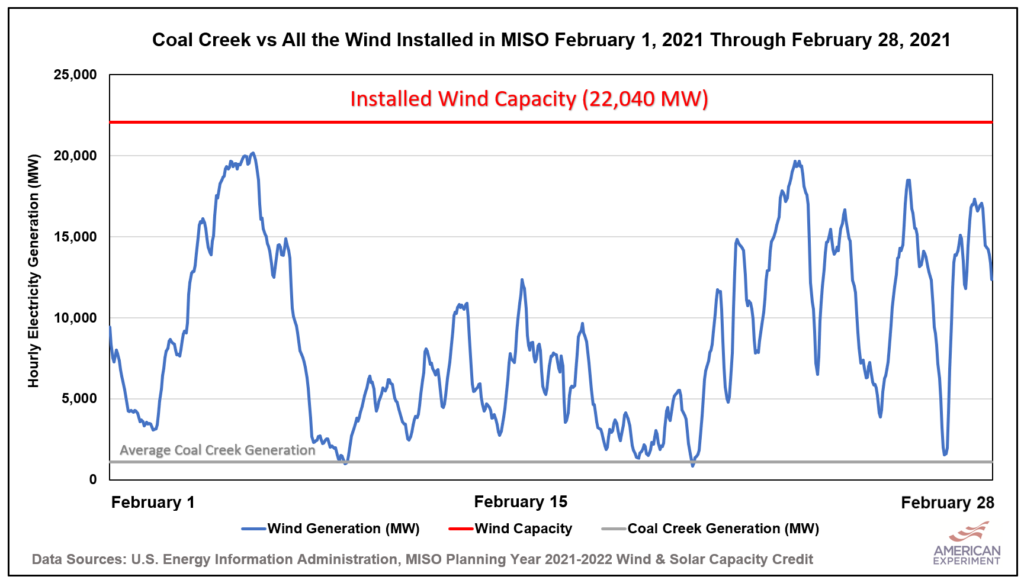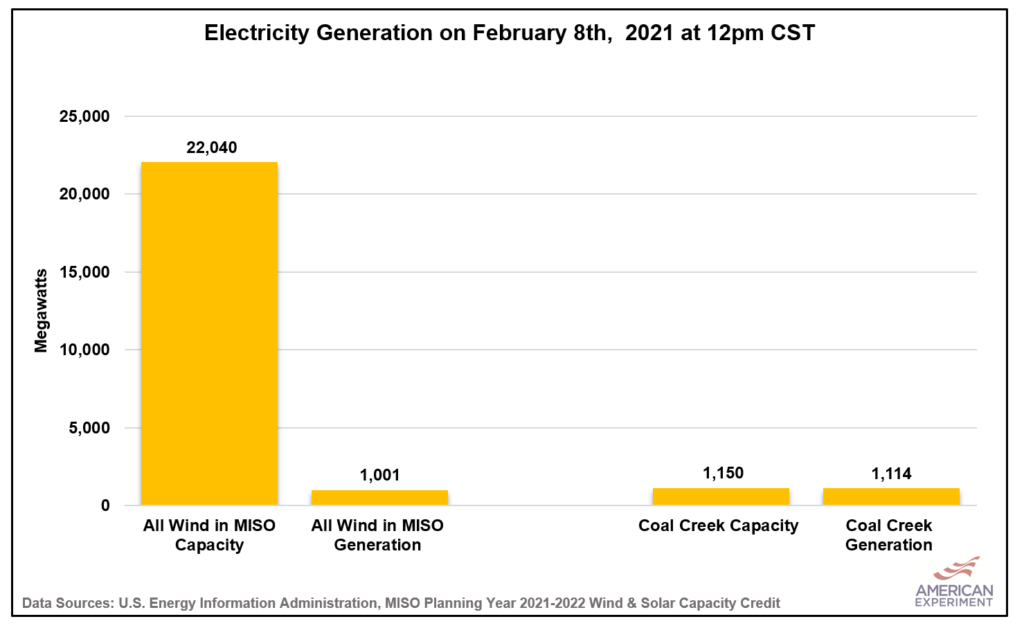Biden Blackouts? EPA threatens the reliability of Minnesota’s electric grid by potentially closing Coal Creek Station
Earlier this week, the Biden Administration’s Environmental Protection Agency (EPA) announced that it plans to deny a permit for a liner for the Rainbow Energy Center, formerly known as the Coal Creek Station, a 1,151-megawatt (MW) power plant near Underwood, North Dakota.
Without the permit, the Rainbow Energy Center (REC) could be forced to close for three years while Rainbow Energy builds a new coal ash disposal system. Unfortunately, the REC’s closure would leave Minnesota’s electricity grid and the rest of the Midcontinent Independent Systems Operator (MISO) system more vulnerable to rolling blackouts.
MISO: Already on the Brink of Blackouts
The Biden Administration’s decision to deny the permit is astonishingly irresponsible, considering that the MISO system already has a 1,200 MW capacity shortfall, meaning there isn’t enough reliable power plant capacity on the 15-state regional grid to which Minnesota belongs to meet our peak electricity demands, plus a margin of safety.
All else being equal, forcing the REC to close would nearly double the size of MISO’s capacity shortfall, making the region more vulnerable to rolling blackouts if the wind isn’t blowing or the sun isn’t shining.

This power plant has been essential for keeping the lights on. The graph below compares electricity generation from the then-Coal Creek Station in February of 2021 to the electricity generated by wind turbines throughout the entire MISO footprint.

During multiple hours, the Coal Creek Station, with a capacity of 1,150 MW, generated more than the 22,000 MW of wind on the MISO system despite the fact that there was 19 times more wind capacity in MISO than the capacity at Coal Creek.

The Biden Administration is senselessly reducing the reliability of the electric grid at a time when rolling blackouts are becoming more common throughout the nation by denying the permit for Rainbow Energy’s ash disposal system, which was approved by EPA when Great River Energy owned the plant. The administration should correct this error before it results in blackouts.